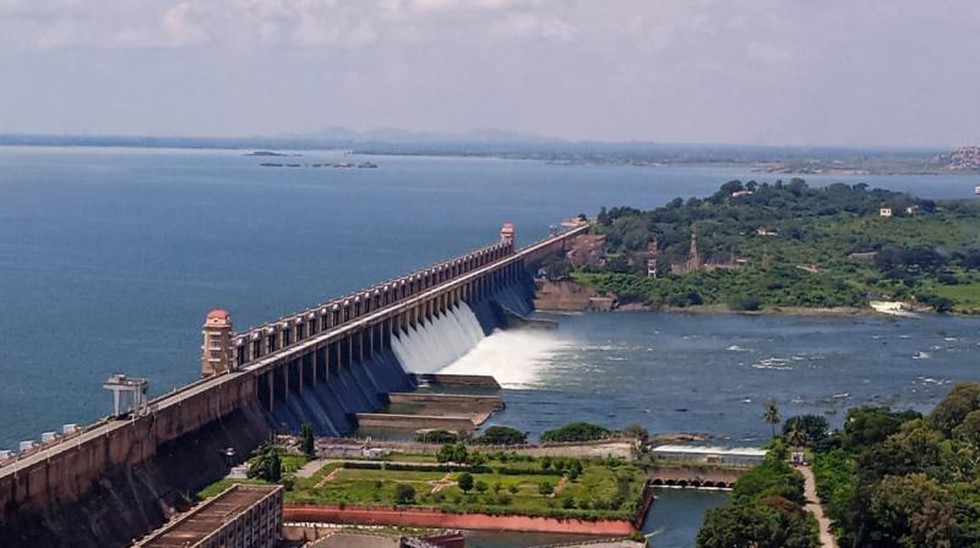About Tungabhadra Dam:
- Tungabhadra Dam, also known as Pampa Sagar, is a multipurpose dam constructed across the Tungabhadra River, a tributary of the Krishna River.
- The dam is near the town of Hospet in Karnataka.
- This was a joint project of erstwhile Hyderabad state and erstwhile Madras Presidency when the construction was started; later it became a joint project of Karnataka and Andhra Pradesh after its completion in 1953.
- Tunga Bhadra reservoir has a storage capacity of 101 TMC with a catchment area spreading to 28000 sq. km.
- The dam is about 49.5 meters in height and has about 33 crest gates.
- The Tungabhadra reservoir and the Mullaperiyar dam in Kerala hold the unique distinction of being the only two reservoirs in the country that were built using a combination of mud and limestone.
Key Facts about the Tungabhadra River:
- It is a major river in the south Indian peninsula.
- It is the largesttributary of the Krishna River.
- Origin:
- It is formed by the union of two rivers, Tunga and Bhadra, and hence the name.
- Both the Tunga and Bhadra Rivers originate on the eastern slopes of the Western Ghats.
- The two rivers merge atKoodli in the Shimoga district of Karnataka, giving birth to the Tungabhadra River.
- Course:
- It flows in a more or less northwest direction before joining the Krishna River at Sangamaleshwaram in Andhra Pradesh.
- The Krishna Riverfinally ends in the Bay of Bengal.
- The river has a total length of 531 km and a catchment area of 28,000 sq.
- It flows through the states of Karnataka and Andhra Pradesh.
- It is influenced chiefly by the South-West monsoon.
- Major Tributaries: Varada River andHagari (Vedathy) River.
- The river has several dams and reservoirs built on it, including the Tunga Anicut Dam, the Bhadra Dam, the Hemavathy Dam, and the Tungabhadra Dam.
- History:
- The Hindus consider this river sacred, and there is a mention of the river in Ramayana, where it is referred to as Pampa.
- In historical times, the Tungabhadra River was known as the Varada River.
- The river was an important source of water for the Vijayanagara Empire, which ruled over the region from the 14th to the 17th century.
- The city of Hampi, which was the capital of the Vijayanagara Empire, was located on the banks of the river.
